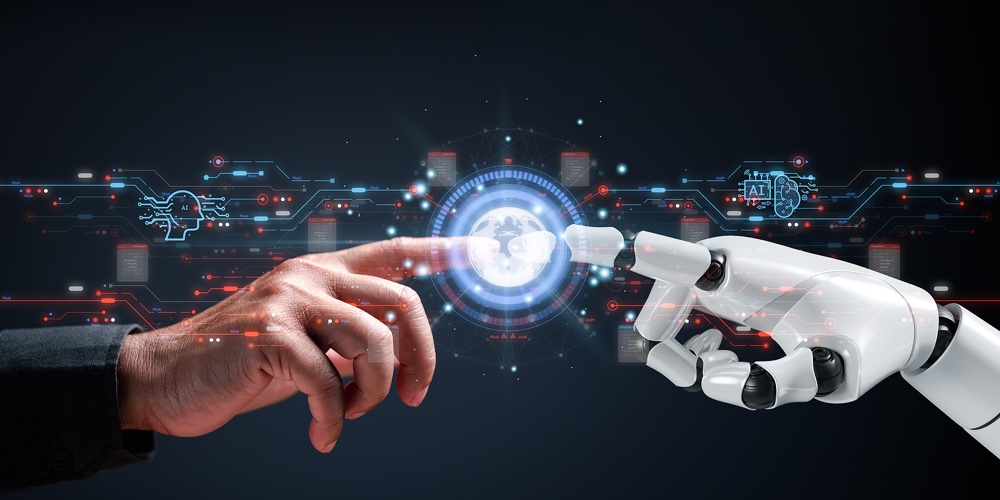The rise of AI and the implications for credit unions

AI has been dominating the conversation in recent months, ever since the launch of ChatGPT in late 2022. And while ChatGPT is now only 6 months old, we have already seen an explosion of growth in AI programs, with Microsoft and Google immediately launching their own AI-driven initiatives.
AI is quickly becoming a necessary component for any tech company, and other industries are already making moves to incorporate it into their processes. We’ve seen blogs, recipes, code and other AI generated content in recent months. In China, an AI program was used in tumor diagnosis, and achieved higher accuracy in a shorter amount of time than the human doctors.
The future of industry is rapidly evolving in front of us. Sundar Pichai, CEO of Alphabet, has said “By the end of this decade, there are going to be two kinds of companies: those that are fully utilizing AI and those that are out of business.”
It’s time to prepare for the future. Ask yourself, “how can my credit union utilize AI?”
How does AI work?
For a lot of people of a certain generation, the first thing they think of when they hear AI is Skynet, the genocidal program that is the main villain of the Terminator series. If that’s your reference point, a future dominated by AI can be a terrifying prospect. But AI outside of the movies is simultaneously a far less capable force while also being vastly more beneficial to the human race.
For an AI program to work, it first and foremost requires labeled data, and a lot of it. AI programs use data to look for correlations and patterns and to generate predictions about future occurrences based on identified patterns. Providing more and more data allows an AI algorithm to make more accurate predictions, better replicate human conversations, create articles, or whatever else you want the program to do.
Why is AI exploding now?
As a concept, AI has been around for a long time. So why is just now beginning to dominate the conversation? 4 key factors are beyond the AI explosion we see today:
- We just talked about how the main thing an AI algorithm needs to function is data. Global labeled data has been doubling every two years and is expected to reach 175 Zettabytes in 2025: that’s 175 billion-million-megabytes of information about anything and everything. This kind of labeled data enables the training of today’s large language models (LLMs).
- Besides data, the main thing we needed for functional AI was computational power. For the past 50 years, computational power has been doubling every 12 to 24 months, but it is only within the last 5 years that we have achieved the power needed to run today’s deep learning algorithms.
- The third contributing factor is the cost associated with training AI systems, which has been a limiting factor for a long time, but no longer. Since 2018, the cost to train AI systems has dropped by an astonishing 99.5%.
- The final piece of the puzzle was investments. Beginning in 2021, corporations invested $160 billion in AI. And not for nothing – the industry is expected to be worth $1.6 trillion by 2030.
AI in the financial industry
AI has already made its debut in the financial industry. AI algorithms are used to forecast economic conditions to help banks prepare for potential recession or growth, to identify members who are most likely to remain profitable or to leave and to identify which products to promote to which customers based on economic and personal factors.
Banks and fintechs primarily use AI technology, since they are typically larger, have access to more data and have a larger budget available to fund innovation. By partnering with technology companies, more and more credit unions can gain access to this powerful technology, allowing them to make data-driven decisions that increase profitability while also improving the member experience.
Recently, a credit union was able to experience firsthand the power of AI by testing a predictive AI solution with the aim of promoting certificates of deposit (CDs) to the credit union’s members. The AI-based model identified the members most likely to respond positively to a CD-driven marketing campaign, and who were most likely to invest larger amounts. When compared with the group selected by the credit union’s normal marketing selection criteria, the group selected by the AI algorithm drove 11 times more deposits gathered and three times more certificates of deposit opened. Utilizing the predictive AI algorithm allowed the credit union to not only receive an incredible return from its marketing efforts, but to also significantly increase its liquidity during this time of rising rates.
The practicalities of AI
At this point, you should be convinced of the benefits of AI and you may start to think that you could develop a platform of your own. If this is the case, you may need to temper your expectations. ChatGPT spends in the realm of $10 million a day to run their server infrastructure. Credit unions simply do not have the resources to start their own AI programs – not right now, at least.
So, any credit unions looking to start incorporating AI into their day-to-day activities should seriously consider partnering with trusted technology providers, rather than trying to develop their own. Many of these existing AI solutions are geared for the financial industry, and some were created with credit unions specifically in mind.
AI is ultimately driving major disruption in many industries, and certainly it will do the same in financial services. AI is the area where credit unions cannot afford to be left behind. Start looking into areas where your credit union could implement AI technology and start researching providers.





